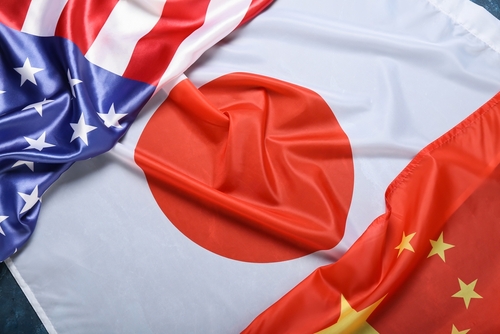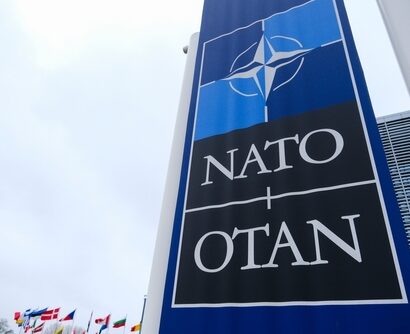Abstract: The U.S.-China strategic competition is intensifying and has the potential to spill over into a kinetic conflict. For allies of the U.S., such as Japan, a military conflict between its ally, Washington and its biggest trading partner, Beijing, is unacceptable. As a result, using the free and open Indo-Pacific framework, Tokyo is attempting to moderate the negative consequences of U.S.-China strategic competition by enhancing deterrence, building resilience in its economy, and pursuing engagement with China.
Problem statement: How to understand Japan’s role in the Indo-Pacific region and how it strives to uphold the political status quo and moderate the emerging U.S.-China rivalry.
So what?: Scholars and lawmakers would be mistaken not to see Japan’s region-building efforts in the Indo-Pacific region as moderating a tense economic and strategic relationship between two great powers, the U.S. and China. Japan’s Free and Open Indo-Pacific vision and similar diplomatic efforts need to be understood within the context of its relationship not only with the U.S. but also with China.
Source: shutterstock.com/Pixel ShotJapan’s Free and Open Indo-Pacific Vision
The Indo-Pacific framework is inseparable from contemporary Japanese foreign policy. The Indo-Pacific is both a loosely defined geographical space and a normative understanding of what was previously labelled the Asia-Pacific. The term’s origin can be credited to various sources, such as a 1976 Australian white paper[1] briefly using the concept or a subsequent more contemporary usage in 2013.[2] Its transition into the lingua franca of foreign policy discourse can safely be ascertained to lie with the Japanese government, led by Prime Minister Shinzo Abe, adopting the concept wholesale in 2016 through its “Free and Open Indo-Pacific” (FOIP) vision.[3], [4]
The Indo-Pacific is both a loosely defined geographical space and a normative understanding of what was previously labelled the Asia-Pacific.
The FOIP is a conceptual tool which has, since its official launch in 2016, been used by Japan to create a broader regional order. Yuichi Hosoya[5] notes that this did not emerge out of thin air. Japan has previously attempted to promote similar projects but failed to garner any traction until the FOIP vision came along. Following the popularisation of the Indo-Pacific, key regional actors, such as Australia, South Korea, and the U.S., adopted the concept and presented their own similar visions of the region. Furthermore, other notable players such as Canada, the Netherlands, France and Germany have launched similar policy guidelines despite being physically distant from the Indo-Pacific region. Many countries have indirectly adopted the concept through being members of international organisations such as the Association of Southeast Asian Nations[6] (ASEAN) and the European Union[7] (EU) as they announced their respective approaches to the Indo-Pacific region. Arguably, it is the first Japanese foreign policy strategic formulation that has garnered global yet localised adoption by many like-minded and unlike-minded states.
Modern-Day Geopolitics
Rebin Fard[8] argues for so-called constructivist geopolitics, bridging the gap between both classical and critical geopolitics, which may be especially apt in helping to understand Japan’s foreign policy behaviour following the end of the Cold War and the subsequent emerging great power rivalry between the U.S. and the People’s Republic of China (PRC). As Fard explains, classical geopolitics emphasises resources and geography as being vital in determining the features of a country’s geopolitical importance. Critical geopolitics, on the other hand, is concerned with the geographical assumptions and designations that underlie the making of world politics. In meshing the two, a constructivist geopolitics perspective sees geopolitical regions as being not only objective but also subjective as states interact with each other.
Japan’s position in moderating the emerging U.S.-PRC strategic competition in the Indo-Pacific region and globally is based on the nexus of a classical and critical geopolitical analysis of Japan’s relationship with both countries. Tokyo’s preferred end state for the relationship is upholding and promoting the international order based on the rule of law.
The U.S.-Japan alliance that has been in place since the end of the Second World War remains the bedrock of Japanese foreign policy to this day. Unlike the Ango-Japanese alliance of convenience that came and went in the early 20th century, the U.S.-Japanese alliance is not just a military alliance. Still, it should instead be seen as a comprehensive partnership beyond the military realm, given its shared values and deep economic relationship that developed in the post-war period. Post-war administration and its relationship with the U.S. certainly made it different from the normal bilateral military alliance. One of the critical building blocks of Japan’s FOIP vision lies in its relationship with the U.S.
The U.S.-Japan alliance that has been in place since the end of the Second World War remains the bedrock of Japanese foreign policy to this day.
Japan’s relationship with the PRC is likewise crucial to understanding the FOIP and, by extension, its general approach to foreign policy, as the two are not only economically interdependent but also share significant historical ties and geographic proximity Matake Kamiya,[9] one of the earlier scholars, points to the increasing importance of the Indo-Pacific concept and Japan’s usage. This contrasts the common description of the FOIP being some anti-China coalition. Kamiya argues that it is not irreconcilable that Japan cooperates with like-minded countries in the region to bolster the international order. This can occur simultaneously, promoting an inclusive approach and cooperation with China as a means to ensure peace and stability in the region. Outright excluding China from the international system would leave it having even fewer incentives for respecting its rules.
In this endeavour, Japan’s other neighbours of the PRC have no choice but to coexist with the Middle Kingdom. However, they do have a say in how that relationship is framed. This agency explains Japan’s FOIP Vision and its non-zero-sum approach to crafting a framework for coexistence.
Three Layers in Japan’s Region-Building
In tracing Japanese foreign policy, the execution of the FOIP can be seen through three different layers. First and foremost is the U.S.-Japan alliance, an inseparable aspect of Japan’s foreign policymaking. Japan’s other multilateral agreements and security frameworks are the second layer of regional order building. AUKUS, the trilateral security agreement between Australia, the United Kingdom and the U.S., is one such avenue for Japan to potentially engage with. Likewise, the Quadrilateral Security Dialogue, or simply the Quad, is a platform for Japan to discuss regional security issues with fellow stakeholders in Australia, India, and the U.S. The Reciprocal Access Agreements (RAA) that Japan has with several of its regional partners, the most recent being with the Philippines,[10] is also part of the second layer of region-building. The North Atlantic Treaty Organization’s (NATO) Indo-Pacific partners[11] (IP4) grouping of Australia, Japan, South Korea and New Zealand–all close partners with NATO–has also emerged as a platform for Japan’s second layer region building.
Japan’s third and final layer in internationalising its security concerns is its many economic relationships with countries inside and outside the Indo-Pacific region. The Comprehensive and Progressive Agreement for Trans-Pacific Partnership[12] (CPTPP), which initially looked set for failure after the U.S. departure and was later salvaged in part by Japanese leadership, is one of the more notable efforts to promote economic interconnectivity in the region. A similar project is the deal that Japan successfully brokered with its former economic competitor in the EU. The Japan-EU Economic Partnership Agreement[13] (EPA) was hailed as the “largest open trade zone in the world”. All the while, Japan and the EU have agreed to cooperate on quality infrastructure and sustainable interconnectivity.[14] Through the Regional Comprehensive Economic Partnership[15] (RCEP), Japan is also engaging economically with its partners in ASEAN to influence the important region otherwise susceptible to Chinese economic charm.
The Comprehensive and Progressive Agreement for Trans-Pacific Partnership is one of the more notable efforts to promote economic interconnectivity in the region.
Japan is, in part, operating in the knowledge that the endowment of resources and the facts of geographics have on its position in the Indo-Pacific region in an objective sense. Simultaneously, it also acts on the realisation that the subjective dimension of geopolitics is key in moderating the emerging and potentially destructive U.S.-PRC rivalry through region-building. The power politics in the Indo-Pacific region, as seen through the lens of national interests and state-to-state interaction, gives Japan an opportunity to work towards upholding an international order based on the rule of law instead of a Machiavellian, might-is-right approach to international relations. Since international law finds itself without the enforcement mechanism otherwise present on the national level, it is of critical importance and up to the regional stakeholders to uphold inclusive order based on the rule of law.
Dr Stephen Nagy is a professor of politics and international studies at International Christian University, Tokyo and a visiting fellow at the Japan Institute for International Affairs (JIIA). His latest publications include Nagy, S.R. and Indu Saxena. 2024. Southeast Asia and the Indo-Pacific Construct. Nova Science Publishers; “Middle Power Cyber Security Cooperation in the Indo-Pacific: An Analysis Through the Lens of Neo-Middle Power Diplomacy,” in The Journal of Intelligence, Conflict, and Warfare, Vol. 7 No. 1 (2024), pp. 1-24.
William Winberg, PhD Candidate in international relations, International Christian University, Tokyo; Yokosuka Council for Asia-Pacific Studies (YCAPS) Indo-Pacific Policy Dialogue Intern.
The views contained in this article are the author’s alone and do not represent the views of the International Christian University, JIIA or YCAPS.
[1] Department of Defence, Australian Defence, Canberra: Australian Government Publishing Service, 1976.
[2] Department of Defence, Defence White Paper 2013, Canberra: Department of Defence, 2013.
[3] Ministry of Foreign Affairs, New Plan for a “Free and Open Indo-Pacific (FOIP)” Items of Cooperation: Ministry of Foreign Affairs, 2023.
[4] Rory Medcalf, “Indo-Pacific Visions,” Asia Policy 14, no. 3 (Jul 1, 2019): 79–96, doi:10.1353/asp.2019.0043, https://www.jstor.org/stable/26773956.
[5] Yuichi Hosoya, “FOIP 2.0: The Evolution of Japan’s Free and Open Indo-Pacific Strategy,” Asia-Pacific Review 26, no. 1 (Jan 2, 2019): 18–28, doi:10.1080/13439006.2019.1622868, https://www.tandfonline.com/doi/abs/10.1080/13439006.2019.1622868.
[6] Association of Southeast Asian Nations, ASEAN Outlook on the Indo-Pacific, 2019.
[7] European Commission, Questions and Answers: EU Strategy for Cooperation in the Indo-Pacific, 2021.
[8] Rebin Fard, “Towards a New Concept of Constructivist Geopolitics: Bridging Classical and Critical Geopolitics,” Central European Journal of International & Security Studies 15, no. 1 (March 31, 2021): 26–57. doi:10.51870/CEJISS.A150102, https://search.proquest.com/docview/2843676771.
[9] Matake Kamiya, “”Cooperative Strategy” to Realize “Competitive Strategy”: The Composite Structure of Japan’s “Free and Open Indo-Pacific” Strategy (Vision),” 安全保障研究 = Security Studies 1, no. 2 (April 2019): 39–58.
[10] Ministry of Foreign Affairs, Signing of the Japan-Philippines Reciprocal Access Agreement: Ministry of Foreign Affairs, 2024a.
[11] Ministry of Foreign Affairs, Japan-Australia-New Zealand-ROK Leaders’ Meeting: Ministry of Foreign Affairs, 2024b.
[12] Ministry of Foreign Affairs, Notification of Completion of Domestic Procedures for the Comprehensive and Progressive Agreement for the Trans-Pacific Partnership (TPP11 Agreement): Ministry of Foreign Affairs, 2018.
[13] European Commission, EU-Japan Trade Agreement Enters into Force, 2019.
[14] Jean-Claude Juncker and Shinzo Abe, The Partnership on Sustainable Connectivity and Quality Infrastructure between the European Union and Japan: European External Action Service, 2023.
[15] Association of Southeast Asian Nations, “Regional Comprehensive Economic Partnership (RCEP),” Association of Southeast Asian Nations, last accessed September 03, 2024, https://asean.org/our-communities/economic-community/integration-with-global-economy/the-regional-comprehensive-economic-partnership-rcep/






